When Will The Next Gigantopithecus Fossils Be Found?
Posted by: Loren Coleman on October 25th, 2010
The simple fact is that little is known about Gigantopithecus. As Anthropology Weblogist John Hawks sharply notes: “Gigantopithecus blacki was, as its name implies, a gigantic ape from the Pleistocene of China. Its remains consist only of teeth and jaws, but these are of a tremendous size, with the largest specimens nearly twice the dimensions of male gorilla teeth and jaws.”
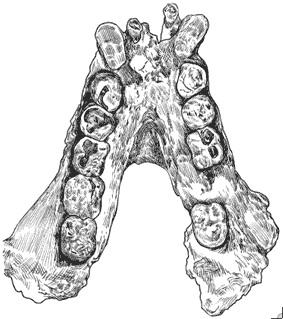
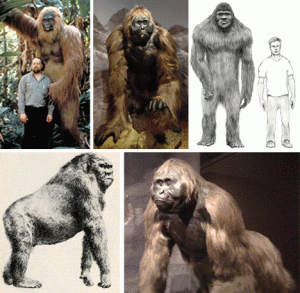
I’ve made no secret of the fact I’m finishing up my long-awaited book with Mark A. Hall entitled True Giants, from Anomalist Books. It is about the possibilities of the ongoing survival of rather large anthropoids, focussing on Gigantopithecus.
In finalizing the thoughts for the book, it is dismaying to realize that it has been so long since any further breakthroughs have been made in finding Gigantopithecus fossils.
I wonder when the readers at Cryptomundo will begin to hear of any hints of new Giganto findings?
Giganto A.

From a painting by Zdenek Burian.
Giganto B.
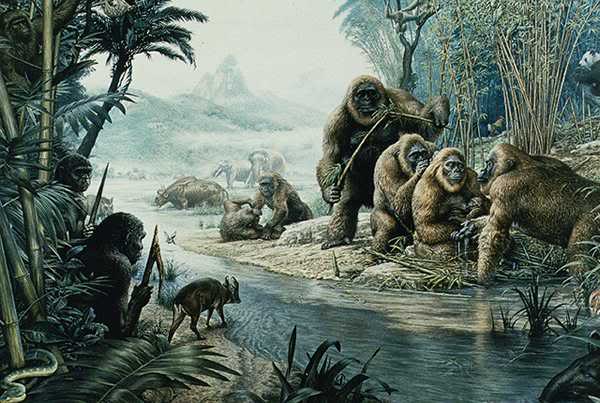 Painting by paleoartist John Sibbick.
Painting by paleoartist John Sibbick.
Giganto C.
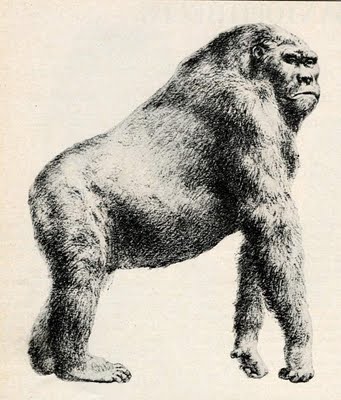
Image courtesy of McMaster University of Gigantopithecus blackii.
Giganto D.
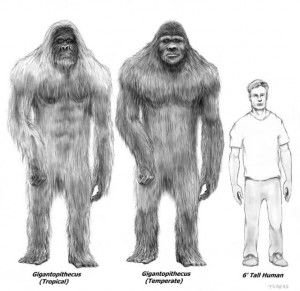
Pete Travers’ drawing compares the different types of Gigantopithecus and a six-foot human.
Giganto E.
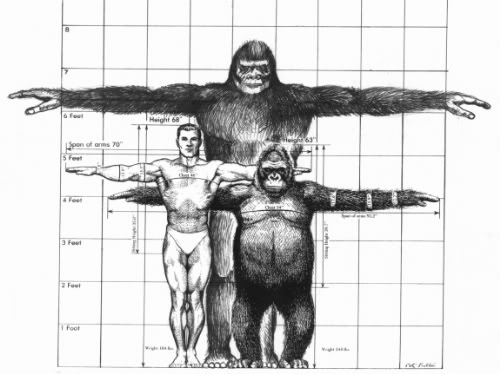
About Loren Coleman
Loren Coleman is one of the world’s leading cryptozoologists, some say “the” leading living cryptozoologist. Certainly, he is acknowledged as the current living American researcher and writer who has most popularized cryptozoology in the late 20th and early 21st centuries.
Starting his fieldwork and investigations in 1960, after traveling and trekking extensively in pursuit of cryptozoological mysteries, Coleman began writing to share his experiences in 1969. An honorary member of Ivan T. Sanderson’s Society for the Investigation of the Unexplained in the 1970s, Coleman has been bestowed with similar honorary memberships of the North Idaho College Cryptozoology Club in 1983, and in subsequent years, that of the British Columbia Scientific Cryptozoology Club, CryptoSafari International, and other international organizations. He was also a Life Member and Benefactor of the International Society of Cryptozoology (now-defunct).
Loren Coleman’s daily blog, as a member of the Cryptomundo Team, served as an ongoing avenue of communication for the ever-growing body of cryptozoo news from 2005 through 2013. He returned as an infrequent contributor beginning Halloween week of 2015.
Coleman is the founder in 2003, and current director of the International Cryptozoology Museum in Portland, Maine.










On a side note, I noticed a couple of similar Gigantopithecus renderings at the end of Destination Truth’s “Jersey Devil/The Yeren” episode.
I am sure that those could be easily tracked down.
Yes, Great Apes fossils are rarer than those of other animals. Fossils already don’t preserve well in rainforests, and the fact Great Apes tend to live in low density further complicate things. Another explanation could be their owning in private collections and I guess they have more sentimental values for their owners than any other animals.
Has anyone considered the possibility that, once upon a time, there was born a gorilla with acromeglia, and died, and now we have the remains of its jaw and teeth? Is not the simplest explanation to one (1) over-sized gorilla jaw that there was one (1) over-sized gorilla? Why use a single probable fluke of a mutation in history to propose an entirely new species? Consider for a moment how many hundreds of thousands of those things there must have been before and after the mortal existence of that single specimen, if that specimen was not a fluke but a representation of an entire species. Yet, we have but one jaw and some teeth — far less than the hundreds of thousands of jaws that ought to be there in that general vicinity. Produce said number of jaws, and then I’ll concede that it was a distinct species. Until then, it was just a genetic fluke that you enjoy looking at because it could conceivably justify your idea that there are giant apes in that region existing to this day.
One jaw? In all, several mandibles and more than 1,500 teeth are sourced to China, India, and Vietnam, with the genus spanning from 6-9 million years ago to 300 thousand years ago.
The premise of stwolf’s argument is groundless.
Perhaps the paucity of fossil evidence could indicate that the species never existed in large numbers in the first place, which could well explain why its decendants–if, indeed, Yeren, ABSM, Bigfoot, and others are such (and I believe this highly possible)–are so rarely seen.
Fossilization is a fabulously rare process. You won’t become a fossil, period, none of you: I just bet my lifetime income on it.
That said: we have so much evidence for Giganto that Loren’s response to stwolf is spot on. That much evidence of a gorilla mutant is virtually a statistical impossibility.
Here’s what I think should be considered because I bet I am right: the closest fossil relative of the sasquatch isn’t Giganto. In fact, it hasn’t been found yet.